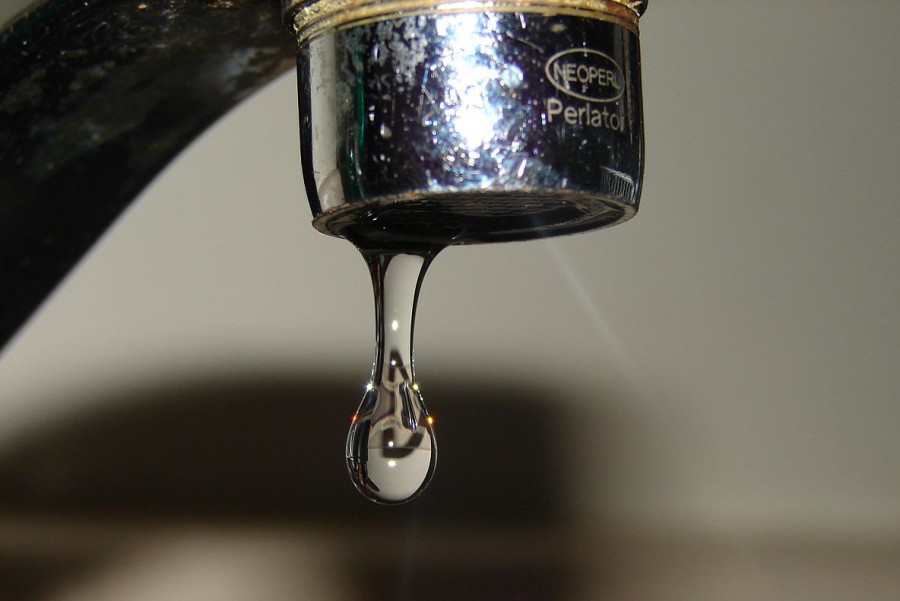Students who live in Flint have been drinking contaminated water
Flint’s switch to Detroit’s water will take 3 weeks before its safe to drink
IMAGE / Wikimedia Commons
For at least the past 18 months, Flint’s water has been contaminated with lead.
And many Kearsley students who live in Flint have been drinking it.
Flint residents are now being provided with free water filters and bottled water, but after 18 months of using lead-polluted water, people are worried about their health, including sophomore Joseph Elliot.
“I feel like I am going to end up getting really sick from having to use the water for so long,” Elliott said. “It scares me that the government said it was safe when it really was not.”
According to the U.S. Environmental Protection Agency, there are short- and long-term effects of lead poisoning.
If exposed to lead for a short period of time, the EPA lists the effects on its website. These effects “may include interference with red blood cell chemistry, delays in normal physical and mental development in babies and young children, slight deficits in the attention span, hearing, and learning abilities of children, and slight increases in the blood pressure of some adults.”
In addition, according to the EPA, long-term effects of lead poisoning potentially can cause strokes and kidney disease, as well as cancer.
It is hard not to use the water every day. The filter they (the state of Michigan) provided doesn’t even fit our sink (faucet). I don’t know how I am supposed to even bathe safely.
— Selestina Pantoja, junior
Risks are especially high for children, as well as pregnant women and their unborn infants.
Junior Selestina Pantoja and her family have had to make a lot of changes since finding out the Flint water was polluted, but according to Pantoja, “it is difficult” to avoid using the water.
“It is hard not to use the water every day. The filter they (the state of Michigan) provided doesn’t even fit our sink (faucet). I don’t know how I am supposed to even bathe safely,” Pantoja said.
Pantoja and her family have also been provided with bottled water, but it still is not enough for the whole family to use.
They have had to continue using the lead-contaminated water due to the difficulty of obtaining enough clean, safe water.
“Water is used daily, between washing hands, cooking, drinking, taking a bath and showering, we (my family and I) cannot afford to buy enough water for all of this,” Pantoja said, “and we don’t receive that much for free.”
The good news is that on Friday, Oct. 16, Flint Mayor Dayne Walling announced a fix at a press conference, as well as on the city’s website.
Walling said Flint’s water supply would be switched from the Flint River back to the Detroit water later that day.
“The money from the state to begin fixing Flint water by reconnecting to Detroit is just a start – a down payment,” Walling said on Flint’s website. “I am not going to stop until every drop of drinking water in Flint is 100 percent safe.”
However, the city said it will take about three weeks for all of the water in the system to be safe to drink.
Residents have been complaining of their water smelling and tasting off, but the government has continuously brushed off their complaints until just recently when the high amounts of lead in the water was detected.
Dr. Mona Hanna-Attisha, director of Hurley’s pediatric residency program, collected data concerning children’s blood levels in the city of Flint and found severely high levels of lead.
As reported by the Detroit Free Press, Hanna-Attisha went public with the results Thursday, Sept. 24, but the government dismissed her collected data.
In addition, the Free Press also reported that Mr. Marc Edwards, Virginia Tech researcher and lead expert, conducted research and concluded in September that Flint water was 19 times more corrosive than Detroit water.
Government officials ignored this startling data as well.
Eventually though, the data was confirmed and Genesee County commissioners declared a public health emergency Thursday, Oct. 1.
In order to save around $3 million dollars, Flint residents were transferred from Detroit’s water system to the Flint water system in April 2014, drawing its water from the Flint River, which caused the crisis.
As reported by The Flint Journal, this switch caused lead to leach from lead service lines throughout Flint.
Three buildings in the Flint School District have also tested above the federal acceptable limits for lead in their drinking water.
The Michigan Board of Education urges parents to take their children who attend Flint schools to get blood tests to see if the children have elevated lead levels in their blood.
The board is also currently pushing for the state government and other authorities to offer free blood testing in convenient locations for Flint children.
The government’s job is to protect the people from things like this. We, the people, have no control over this, and it makes me feel helpless.
— Octavia Brooks, junior
Some affected Flint residents, including junior Octavia Brooks, even believe that members of the government involved in the crisis should be fired from their positions.
“The government’s job is to protect the people from things like this,” Brooks said. “We, the people, have no control over this, and it makes me feel helpless. I cannot believe the government would be so careless with people’s lives in their hands.”
The state is sending aid to Flint, however. On Thursday, Oct. 15, Gov. Rick Snyder signed a bill to give Flint $9.35 million to help fix the city’s water problem.
For Elliott, getting safe drinking water cannot come fast enough. But he harbors ill will toward the government officials whose decisions led to the water mess.
“The government’s denial and lying caused everyone who uses Flint water health risks,” Elliott said. “It makes me wonder. If they felt so assured about lying in this situation, what else has the government lied about? What else is in the water?”

Class: Senior
Extracurricular Activities: National Honor Society, DECA
Sports: Varsity dance, varsity tennis
Hobbies/Interests: Reading, shopping,...
















